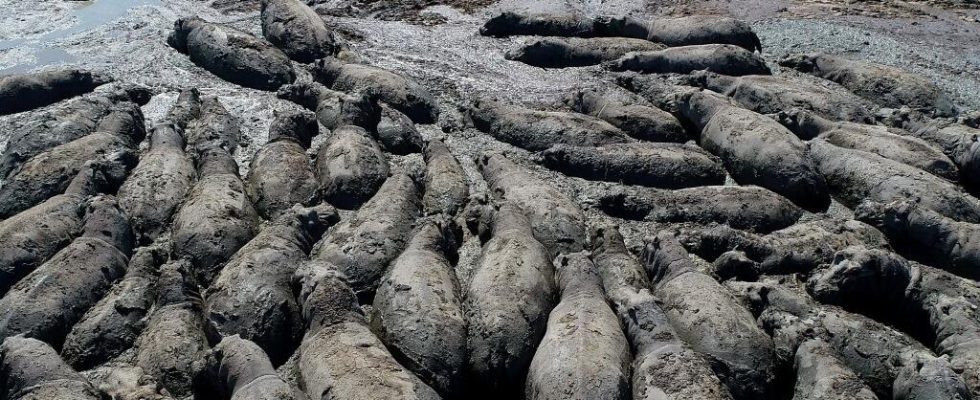The endless drought affecting southern Africa due to the El Niño climatic phenomenon continues to wreak havoc. After the destruction of crops which threatens the population with famine in Zambia, Malawi and Botswana, the drying up of lakes and rivers decimates the herds and threatens the hippos, a species at high risk of extinction according to the International Union of nature conservation (IUCN).
1 min
The images are unbearable. Oxen, stuck in the mud, as if mummified, dying slowly, from exhaustion. In the north of Botswananear the vast wetland of the Okavango Delta, the drying up of lakes and rivers has decimated the last heads of livestock which had so far resisted the drought.
But another species is also threatened: hippos. Botswana is currently home to one of the largest populations living in the wild in the world. But their well-being and survival depends on water resources. A powerful animal with thick skin, the hippopotamus nonetheless remains sensitive and must protect itself from sunburn. The current drought therefore threatens the entire species.
It also forces the herds to move in search of new water points, even if it means moving closer to villages and entering into conflict with the inhabitants. The local authorities therefore want to relocate them to a reserve to avoid any confrontation and preserve the 2,000 to 4,000 hippos that still live in Botswana.
Read alsoFamine, drought: a study highlights the socio-economic impact of climate change in Africa
